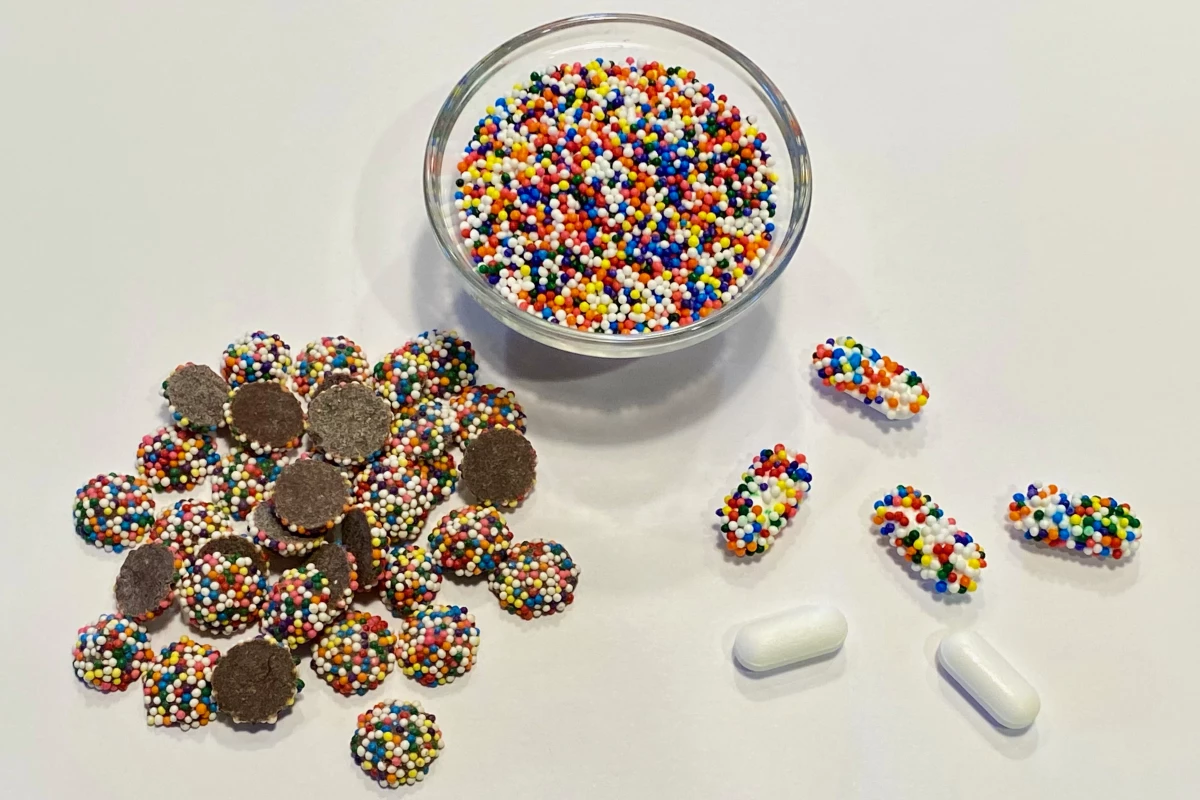Candy sprinkles may make desserts more interesting, but an American scientist has developed what could be a much more valuable use for them. His CandyCode system might one day be utilized to confirm that supposedly authentic pills aren't actually counterfeits.
While we have heard of a number of anti-counterfeiting measures for pharmaceuticals, many of the proposed technologies have involved fairly complex processes, some of which actually require the medication to be altered. The University of California, Riverside's Prof. William Grover set out to develop something much simpler yet just as effective – CandyCode is the result.
The system involves applying a food-grade adhesive to individual pills, then coating those pills with a random assortment of multi-colored nonpareils (aka sprinkles or hundreds and thousands). Each pill is then photographed, and its image data is stored in a database.
When a consumer subsequently wants to check that their medication is the real deal, they start by using their smartphone to take a picture of one of the pills. They then access an online portal, where that photo is compared to the image data on the drug company's server. If a match for the pill's specific color combination and pattern of sprinkles is found, then the consumer is told that the pill is authentic – if no match is found, though, they're warned that it's likely counterfeit.
Of course, it sounds like taking the initial photos would be a lot of work, and that storage of them would require a great deal of memory. However, Grover points out that many pharmaceutical factories already utilize quality control systems in which each pill is imaged as it goes past on a conveyor belt.
Additionally, he states that if each pill's sprinkle pattern was stored as a set of text-based strings – as opposed to a raw photo file – then it would theoretically be possible for a company to produce 41 million pills for each person on earth, yet still be able to identify each one of those pills.
In a test of the concept, Grover photographed a total of 120 sprinkle-coated chocolate candies, in groups of 12. There was an average of 92 sprinkles on each candy, in a total of eight randomly mixed colors.
The image information was stored in a database, wherein each candy's sprinkle pattern was converted into text strings. Even after the candies had been banged around a bit, to simulate the rigours of shipping and handling, it was found that subsequently taken photos of them could be easily matched to the strings in the database.
What's more, when experimenting with coating Tylenol pills with the sprinkles, Grover discovered an added bonus of the CandyCode system.
"Anecdotally, I found that CandyCoded caplets were more pleasant to swallow than plain caplets, confirming Mary Poppins’ classic observation about the relationship between sugar and medicine," he said.
An open-access paper on the research was recently published in the journal Scientific Reports.




